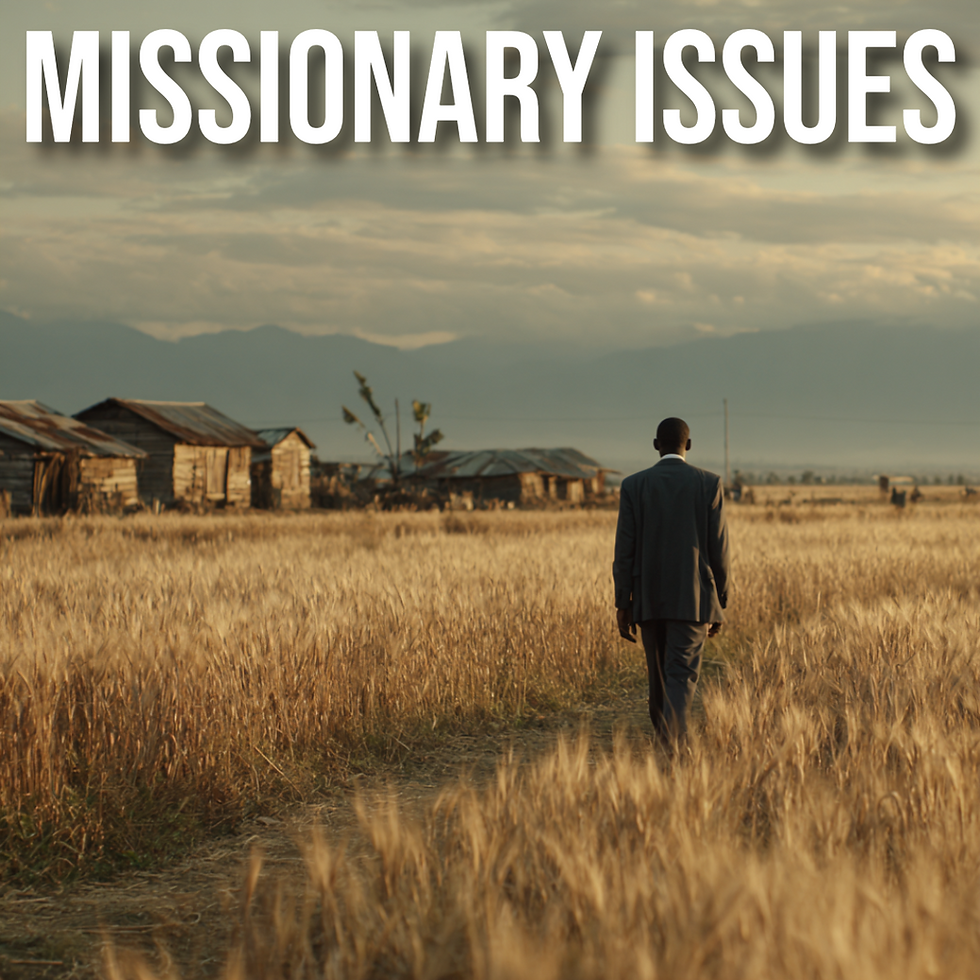Hot and Cold Climate Cultures: Understanding Relationship and Task-Oriented Worlds
- Westwood School of Missions
- Aug 13, 2024
- 3 min read

One of the most common cultural divides missionaries encounter is the difference between hot climate cultures and cold climate cultures. These terms do not refer to temperature but to the way societies prioritize relationships, communication, and daily life. Recognizing these differences helps missionaries adapt, avoid misunderstandings, and minister more effectively.
What Are Hot and Cold Climate Cultures?
Hot Climate Cultures (Relationship-Oriented)These cultures place a high value on relationships, hospitality, and community. Decisions are often made based on trust, feelings, and group dynamics rather than efficiency or written agreements. Personal interaction is the priority.
Cold Climate Cultures (Task-Oriented)These cultures value time, efficiency, and results. Communication is often direct, factual, and focused on completing tasks. Written contracts and schedules carry more weight than verbal promises. Productivity is the priority.
Neither approach is “better” or “worse,” but they are radically different. For missionaries, failure to recognize the distinction can lead to frustration or even damaged relationships.
Characteristics of Hot Climate Cultures
Indirect Communication – People often avoid bluntness to preserve harmony.
Value of Hospitality – Time is freely given to guests, even at the expense of schedules.
Group Identity – Family and community define decisions more than individual preference.
High Context – Much communication relies on shared cultural knowledge, tone, and non-verbal cues.
Flexibility With Time – Punctuality is less important than relationships.
Examples: Latin America, Africa, the Middle East, and much of Asia.
Characteristics of Cold Climate Cultures
Direct Communication – People are expected to say what they mean.
Value of Efficiency – Meetings, schedules, and productivity are emphasized.
Individual Identity – Personal choice and independence are prioritized.
Low Context – Communication is explicit, relying on clear words rather than assumptions.
Strict View of Time – Punctuality and deadlines are considered signs of respect.
Examples: North America, Northern and Western Europe, and some East Asian urban centers.
How These Differences Affect Missionaries
Communication A cold-climate missionary may offend by being too blunt, while a hot-climate national may seem evasive when they are really being polite.
Time and Scheduling Missionaries from cold climates may grow frustrated when meetings start late or plans change suddenly. Nationals from hot climates may feel hurt when missionaries appear rushed or unwilling to linger.
Decision-Making In hot climates, group consensus and relationships often determine choices. In cold climates, logic, facts, and efficiency guide decisions. A missionary who pushes for quick answers may miss the importance of relational trust.
Conflict Resolution Cold-climate people prefer open discussion and resolution. Hot-climate people may avoid direct confrontation to protect relationships, leaving issues unspoken but still felt.
Preparation That Prevents Misunderstandings
1. Study the Local Culture Beforehand
Missionaries who know whether they are entering a hot or cold climate culture can anticipate potential frustrations and adapt more quickly.
2. Adapt, Don’t Demand
Rather than imposing one’s cultural norms, missionaries should learn to function in the host culture. Paul’s example sets the tone. “I am made all things to all men” (1 Corinthians 9:22, KJV)
3. Balance Task and Relationship
Missionaries from cold climates should slow down and value time spent building relationships. Those from hot climates serving in cold settings should learn to honor punctuality and efficiency.
4. Practice Humble Listening
Asking questions and letting nationals explain how things work communicates respect and builds trust.
5. Find Local Mentors
A trusted national friend can help explain cultural nuances and save missionaries from repeated mistakes.
Conclusion
Hot and cold climate cultures operate on very different assumptions about time, communication, and relationships. For missionaries, understanding these differences is not optional. It is essential. Ministry is built on trust, and trust grows when missionaries show respect by adapting to the values of the people they serve.
The missionary’s goal is not to change the culture into their own image, but to bring Christ into the culture in a way that is understood and received. Recognizing hot and cold climate dynamics helps keep the gospel clear and relationships strong.




















Kommentit